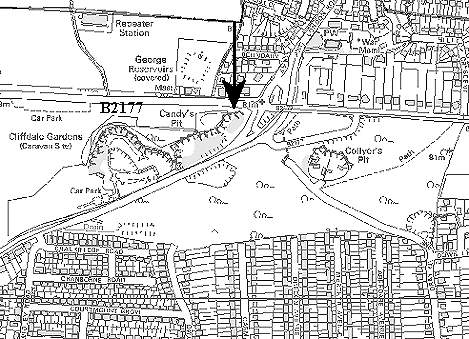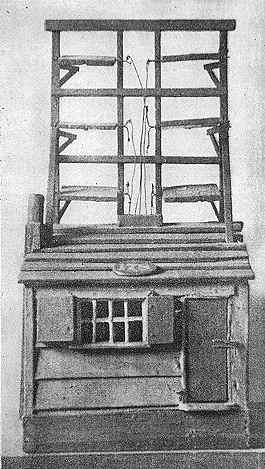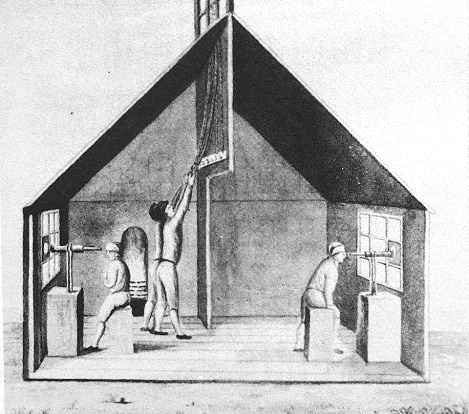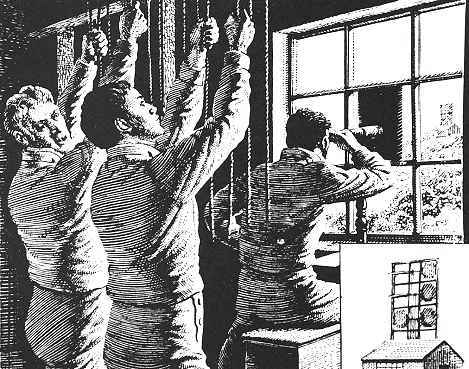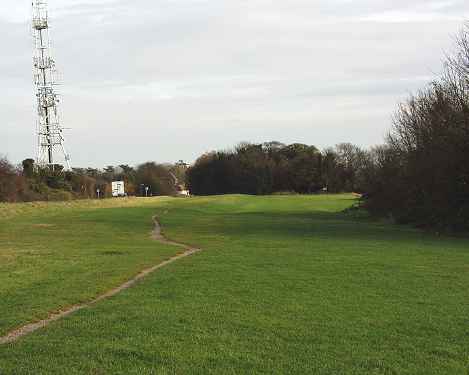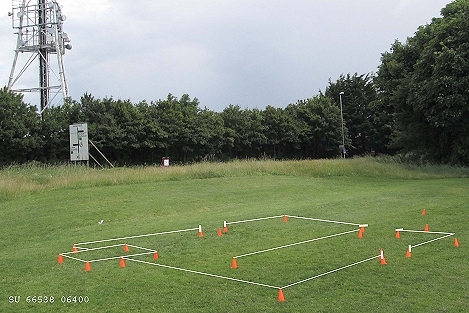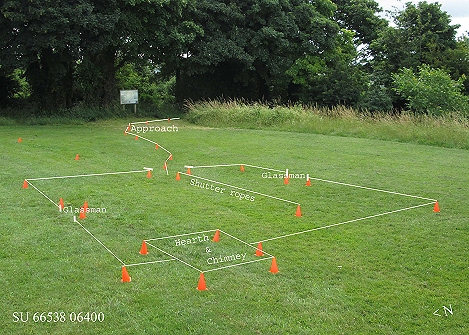|
It seems that the
Telegraph was never meant to permanent but was intended for use only
until the end of the Napoleonic Wars, as the construction of the
signal stations was little better than a sturdy hut with two rooms
and a coal shed. It was very successful however taking about 7.5
minutes to send a signal from Portsmouth to London. Its main
drawback was that it could only be used in good visibility and
during the daylight hours.
There were probably four
men at each station. Two men watched through telescopes - called
Glassmen - for a signal from the stations on either side of them.
When they saw the signal 'all shutters closed' or 123456, they would
call the two 'ropemen' who would operate the station's shutters to
relay the message along the line. The Glassmen and Ropemen would
have interchangeable jobs and one of them would be the Foreman.
There may or may not have been a RN Officer with them.
On 18 May 1814 peace was
proclaimed, Napoleon was banished to the Isle of Elba. On 6 July
1814 the Portsmouth Shutter Telegraph Line was ordered to
'immediately discontinue'. Napoleon had other ideas. He escaped from
his prison island and landed in France on 1 May 1815. Once again
England was at war and the Portsmouth Shutter Telegraph was
re-established. Seven weeks later on the 18 June 1815 Napoleon was
defeated at Waterloo and ten days later on the 28 June 1815 the
Admiralty announced plans to establish a permanent system of
stations using Semaphore - a machine with movable arms. (this is
described on the next page)
|
